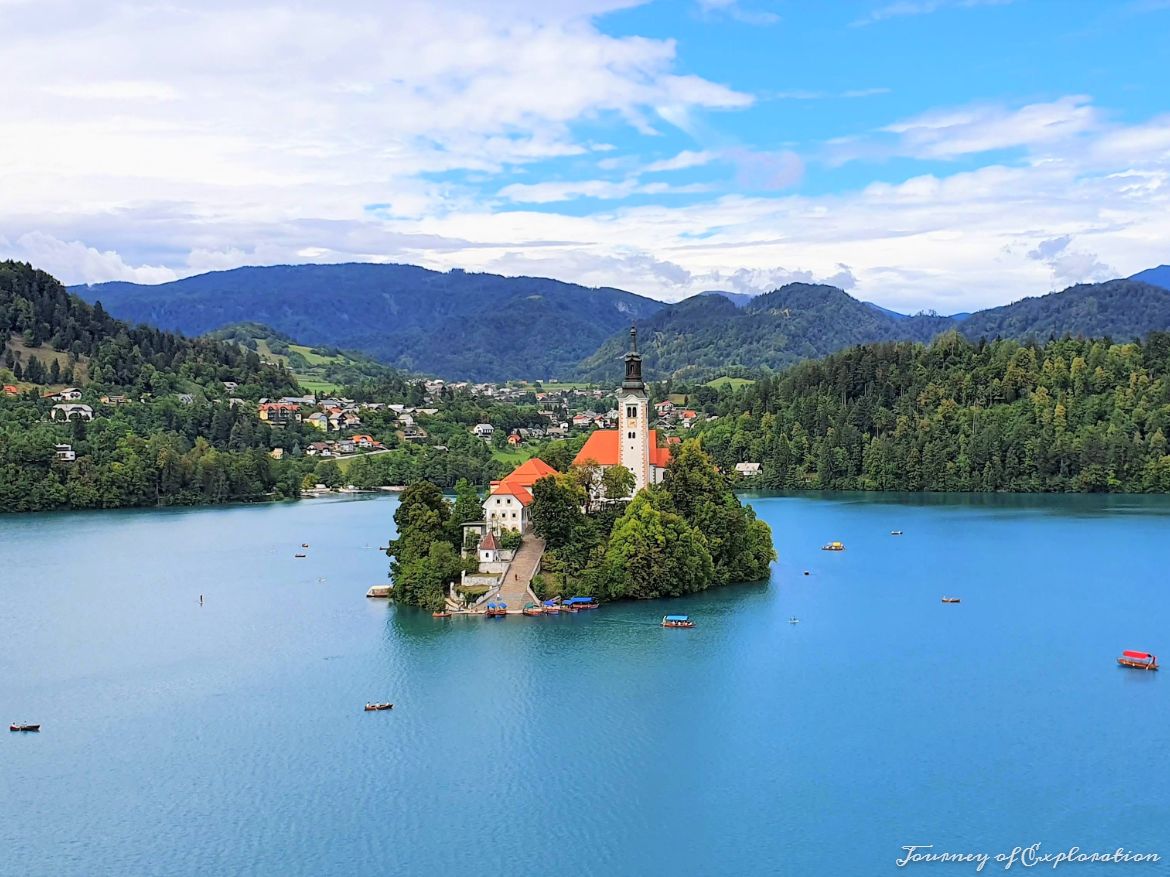Slovenia is a small but beautiful country and a perfect tourist destination for any traveller, as it combines great natural beauty, dramatic scenery, attractive historic towns and stunning hilltop castles.
This travel guide will help you plan the perfect trip to Slovenia by showing you the top attractions and things to do, the best beaches & places to visit including maps, photos and itinerary.
- INTRODUCTION TO SLOVENIA
- BEST TIME TO VISIT SLOVENIA
- HOW LONG TO STAY IN SLOVENIA
- WHERE TO STAY IN SLOVENIA
- PRACTICAL INFORMATION
- HOW TO GET TO SLOVENIA
- HOW TO GET AROUND SLOVENIA
- WHAT TO EAT & DRINK
- THINGS TO DO IN SLOVENIA
- BEST TOWNS & VILLAGES IN SLOVENIA
- BEST BEACHES IN SLOVENIA
- SLOVENIA TOURIST MAP
- SLOVENIA ITINERARY
- SLOVENIA PHOTOGRAPHY
- ACTIVITIES IN SLOVENIA
- SLOVENIA EXCURSIONS & TOURS
- VIRTUAL TOUR OF SLOVENIA
- THINGS TO BUY IN SLOVENIA
- FURTHER READING
- TRAVEL RESOURCES
INTRODUCTION TO SLOVENIA
Why visit Slovenia?
Slovenia is one of the less visited travel destinations in Europe, although it has become more popular in the last few years and for a good reason.
This small country has great natural beauty, dramatic mountains and lakes, underground caves, attractive towns and stunning hilltop castles.
It is also a great destination for outdoor activities, like skiing in winter or hiking during the summer months. Also, the Soca River is a great place for rafting.
The most famous attractions and best places to visit are the stunning Triglav National Park & Lake Bled, the seaside town of Piran, and the attractive capital Ljubljana with its hilltop castle, riverside setting and baroque architecture. Also, the Postojna & Skocjan caves as well as the beautiful setting of Predjama Castle are a must-see for any visitor.
Other attractive towns to visit include Ptuj, the second city of Maribor and Skofja Loka. Although Slovenia is not famous for its beaches, the coastal resort of Portoroz is a decent place for a beach holiday.
Slovenia is just over 20,00sqkm and has 2 million residents, mainly Roman Catholics. Slovenes are the descendants of South Slavs, who settled here from Asia in the 6th century BC. Slovenia was part of the Austro-Hungarian Empire before it became part of the Kingdom of Yugoslavia. It was the first nation of Former Yugoslavia that became independent in the 1990s and it is one of the most prosperous of the former republics. It joined the EU in 2004 and the Euro as its currency in 2007.
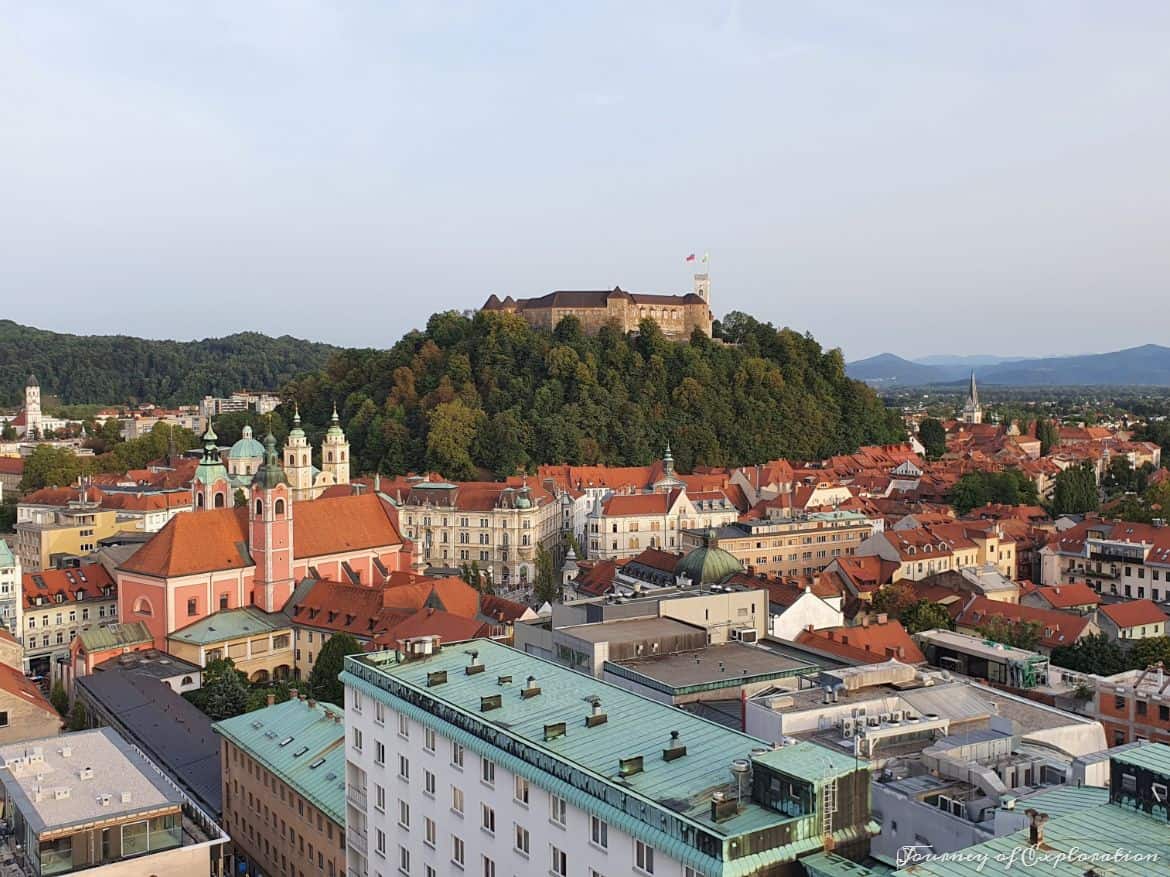
BEST TIME TO VISIT SLOVENIA
The best time to go to Slovenia is during the summer months, late spring or early autumn for the best weather, as it is warm and mostly dry and all attractions are in full swing.
However, I will probably avoid the peak season of July and August because everywhere (and especially the coast, Ljubljana and Lake Bled) tends to get very busy and accommodation is a lot more expensive and difficult to find.
May, June or September are probably the best months for sightseeing, hiking the mountains and touring the country as it’s mostly dry and still warm to enjoy the outdoors but without the crowds.
Also, winter and early spring is a great time to visit Slovenia if you want to enjoy winter sports. The ski season runs from mid-December to mid-April.
Slovenia is not the best destination for a beach holiday and the only coastal resort with a decent sandy beach is Portoroz which tends to get overcrowded during the summer months. The rest of the tiny coastline is mainly rocky without any decent beaches, although locals still swim in a few pebbly spots around Piran, Koper and Izola. You can also swim in Lake Bled or Bohinj, but the water can be quite cold.
HOW LONG TO STAY IN SLOVENIA
One week will be enough to cover most of the major sights but you can stay longer if you want to explore more places or spend more time hiking or doing outdoor activities in the mountains.
You could also combine your trip to Slovenia with visiting the Croatian coast (Istria) as part of an extended stay.
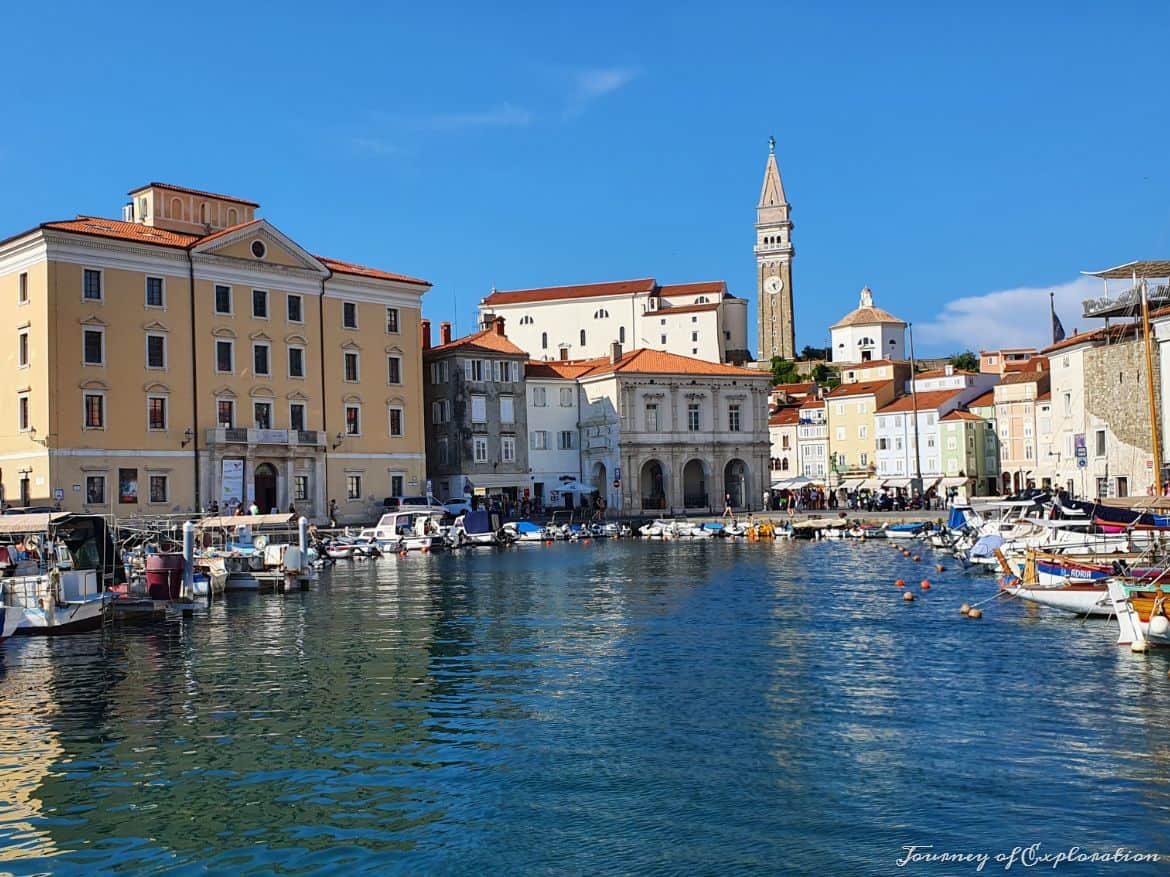
WHERE TO STAY IN SLOVENIA
The best place to stay is the capital Ljubljana, as it provides the best tourist facilities and plenty of accommodation, restaurants and attractions. Also, it is the best base to explore the rest of the country.
It is worth staying in different places if you want to explore the whole country; this will save time from travelling back to the same place. You can spend one night in Piran to explore the coast and two nights in Bovec and Lake Bled to explore the mountains.
Best hotels in Slovenia
- InterContinental: A 5-star hotel close to the train station with an indoor pool, and a rooftop restaurant providing nice views. Private parking on-site at extra cost.
- City Hotel Ljubljana: Great location for exploring Ljubljana and good breakfast. The upper floor rooms have nice views.
- Best Western Premier Hotel Slon: Another great city centre hotel in Ljubljana with excellent breakfast.
- Grand Hotel Union Eurostars: It is located close to Prešern Square in Ljubljana and offers great accommodation in a historical Art Nouveau building.
- Eurostars uHOTEL: Modern and spacious rooms in the heart of Ljubljana.
- Hotel Cubo: A 4-star hotel in the centre of Ljubljana offering luxuriously furnished rooms.
- Hotel Emonec: A smaller and more affordable but still nice hotel located in the heart of Ljubljana’s pedestrian area.
- Grand Hotel Toplice: Located on the shores of Lake Bled, this luxurious hotel features great views of the lake and the Alps from its balconies.
- Hotel Park: Overlooking Lake Bled, it features a wellness centre with a large indoor pool and a gym and rooms come with a private balcony,
- Hotel Astoria Bled: A recently refurbished hotel and a more affordable option, within 5min walk from Lake Bled. Most rooms with balconies.
- Hotel Dobra Vila Bovec: Beautifully designed rooms only 200m from the centre of Bovec.
- Hotel Hvala: A family-run hotel located in Kobarid offering rooms with balconies.
- Hotel Piran: 4-star hotel with a rooftop terrace offering nice views in the centre of Piran by the waterfront.
- Art Hotel Tartini: Excellent location by Tartini Square, some rooms have private balconies with views of the harbour of Piran.
Click here to check and compare prices on accommodation for the whole city of Ljubljana.
PRACTICAL INFORMATION
Entry requirements/Visa
Citizens of European Union (EU) and European Economic Area (EEA) countries only need a photo ID or a passport to enter Slovenia for up to 90 days.
If you are not a citizen of an EU/EEA country, you may need a Schengen visa. The specific requirements and application process can vary depending on your nationality.
For full details check this website.
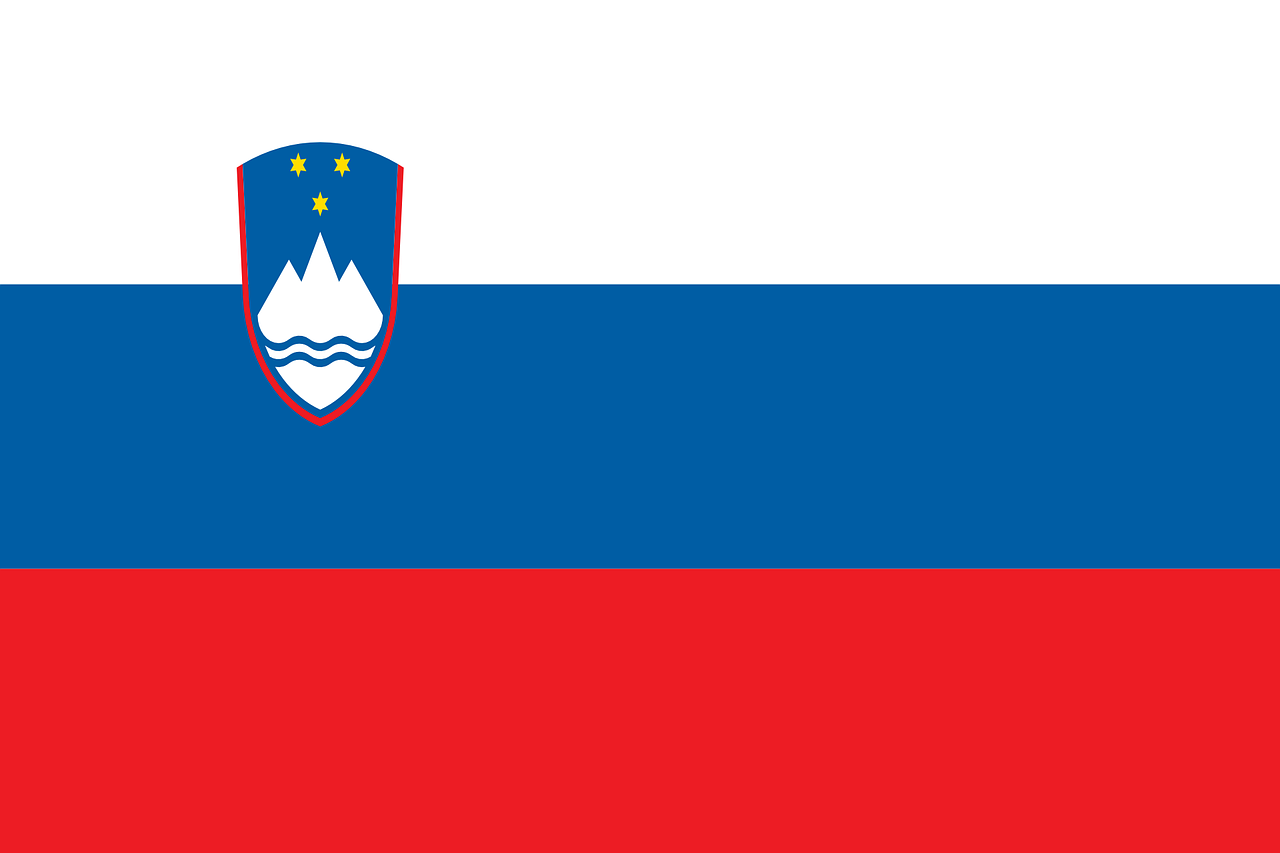
Language
Slovene is the official language, which is one of the Southern Slavic languages. Most people speak some English, German or Italian.
Basic words:
- Thank you – Hvala
- Hello – Zdravo
- Goodbye – Na svidenje
Opening hours
Shops: 8am –7pm Monday to Friday & 8am-1pm on Saturday
Banks: 8.30am–5pm Monday to Friday
Restaurants: 11am–10pm
Safety
Slovenia is a safe place and you should not face any problems during your stay. However, you should be alert in crowded areas, such as busy pedestrian streets and train stations.
Travel Insurance
It is always advisable to take out travel insurance before travelling, even if a destination like Slovenia does not present any safety issues. It’s best to be insured in case of an accident, medical emergency or travel delay,
SafetyWing is a decent option for travellers. Alternatively, you can use one of the comparison websites for cheaper prices.
Weather
Slovenia has a diverse climate due to its varied geography. The country is divided into three climatic regions: Alpine in the northwest, Continental in the central and eastern areas, and Mediterranean along the coast.
- Summers: In the Alpine region, summers (June to August) are generally mild, with average daytime temperatures ranging from 15 to 25 degrees. In the central and eastern parts of Slovenia, summers are warmer with average temperatures ranging from 20 to 30. Along the coast, summers are warm to hot, with average temperatures ranging from 25 to 35 degrees Celsius.
- Winters: Winters in the alpine and continental regions can be cold, and snowfall is possible, especially in higher elevations. Winters in the coastal areas are milder compared to the interior, with temperatures rarely dropping below freezing.
- Rainfall: Slovenia generally experiences rainfall throughout the year, but it can vary by region. The coast tends to be wetter, while the eastern and central parts of the country may have drier conditions.
- Autumn and Spring: Autumn (September to November) and spring (March to May) can bring mild temperatures, with some variations depending on the region. These seasons are considered pleasant times to visit, with colourful landscapes in autumn and blooming flowers in spring.
More information regarding the weather and average temperatures can be found here.
Money
The currency is the Euro (EUR). Although credit cards are widely accepted, it’s a good idea to carry a bit of cash and some spare change for public transport, parking metres or small stores. The best place to get Euros is through an ATM available in most towns and cities.
Slovenia is cheaper than most of Western Europe, but prices tend to be higher during the peak summer months (July and August), especially for car rental and accommodation.
Electricity
The power plugs and sockets are of type C and F (with two round pins). The voltage is 230 V and the frequency is 50 Hz.
Internet/Mobile Phone
To avoid roaming charges, you can buy a local SIM card. The 4 major mobile providers are A1 Slovenija, Telemach, T-2 and Telecom Slovenija.
Airalo is the world’s first eSIM store that solves the pain of high roaming charges by giving you access to 200+ eSIMs (digital SIM cards) globally at affordable prices. Be aware that Airalo is only compatible with the latest mobile phones.
Most hotels offer free wifi and there is also free wifi in Ljubljana city centre and some other towns.
Packing List
For information on travel gear and what to pack click below.
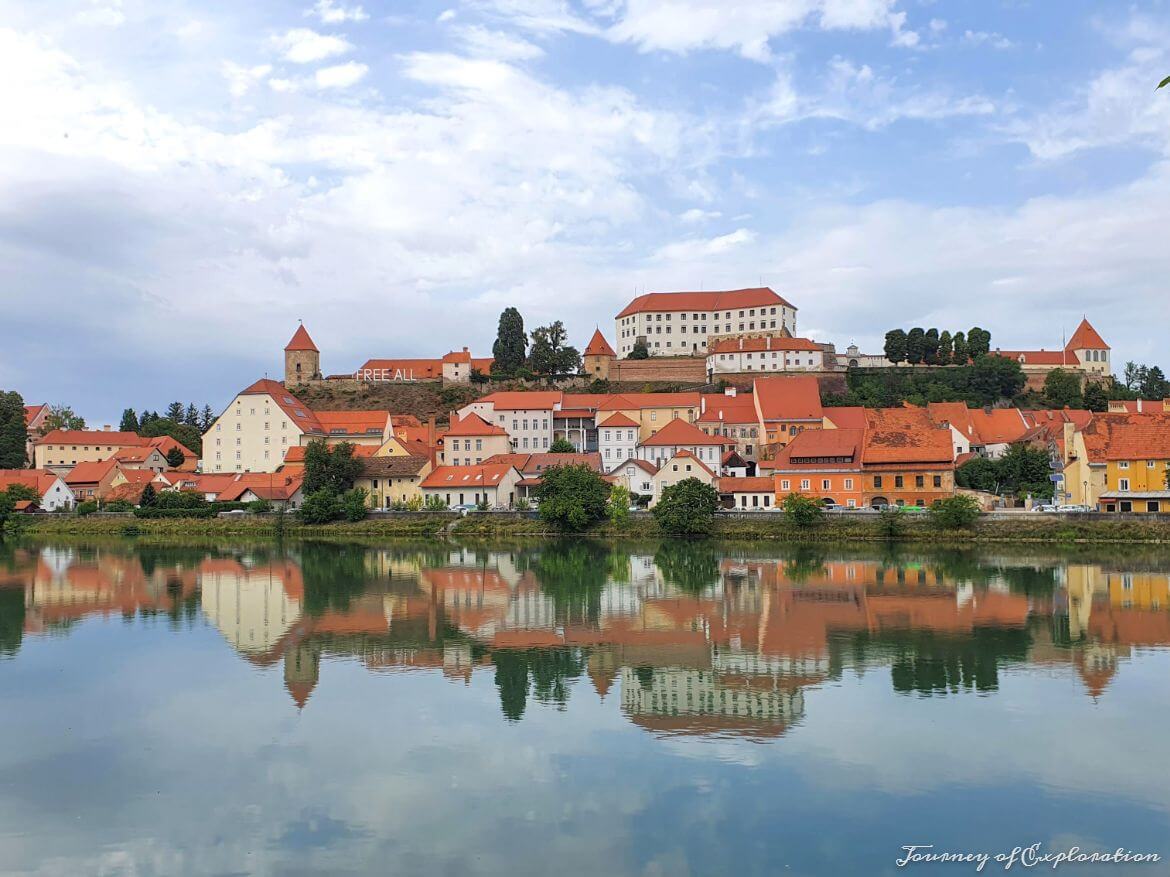
HOW TO GET TO SLOVENIA
By Plane
Ljubljana Jože Pučnik Airport is the only international airport in Slovenia and is connected with most European capitals. However there are only a few low-cost airlines, only from London and Brussels with Wizz Air, so generally flights can be quite expensive, especially in the summer months.
An alternative option is to fly to a neighbouring country (Croatia or Italy) and then enter by land (train/bus or car). Some nearby airports, like Zagreb, Pula, Rijeka, Trieste or even Venice offer cheaper flights from many European cities. A decent choice if you would like to combine your visit to Slovenia with a visit to Croatia or Italy.
For the best website to book your flights, check the link below. Always check prices in advance for the best deals.
Getting from/to the airport
The airport is located about 27km to the north of the capital Ljubljana. Upon your arrival, you can rent a car (highly recommended) in one of the rental offices at the airport. The airport is the best place to book if you haven’t done it before you arrive.
The taxi station is located in front of Terminal B. Official taxi providers use a taximeter. The journey to Ljubljana takes about 30min and costs about €50 euros.
The bus station is located close to Terminal A. Buses run directly to Ljubljana, Kranj and Bled in Slovenia. More information about the bus service can be found here.
By Ferry
There are ferries (catamaran) between the seaside town of Piran and Trieste (40min duration), and also to Rovinj and Venice in high season.
For the cheapest site to book your ferry ticket in Slovenia, check the link below.
By Train
You can enter Slovenia by train from all neighbouring countries (Italy via Trieste, Croatia via Zagreb and Rijeka, Austria, Germany & Hungary).
You can get discounted train travel across Europe by using the Eurail Pass. Only worth it if you plan to use trains frequently and for a long period of time.
By Bus
Slovenia, and particularly Ljubljana, is well connected by bus with various destinations in Europe. Bus service (mainly by coach) can be quite comfortable and sometimes cheaper than the train.
Rome2Rio is a good website for checking prices & times on train and bus travel.
By Car
Slovenia is well connected with a good road network with neighbouring countries. You can enter Slovenia by car, but you need to display a road toll sticker on the windscreen (€15 per week), bought at services or petrol stations. The borders with Italy, Austria and Hungary (EU Schengen members) are usually open with no checks. However, in some popular crossings border checks can still apply. It did happen at a crossing with Italy while we were there and we had to wait for about 1h in the queue. Passport checks are required at the borders with Croatia so expect delays in high season.
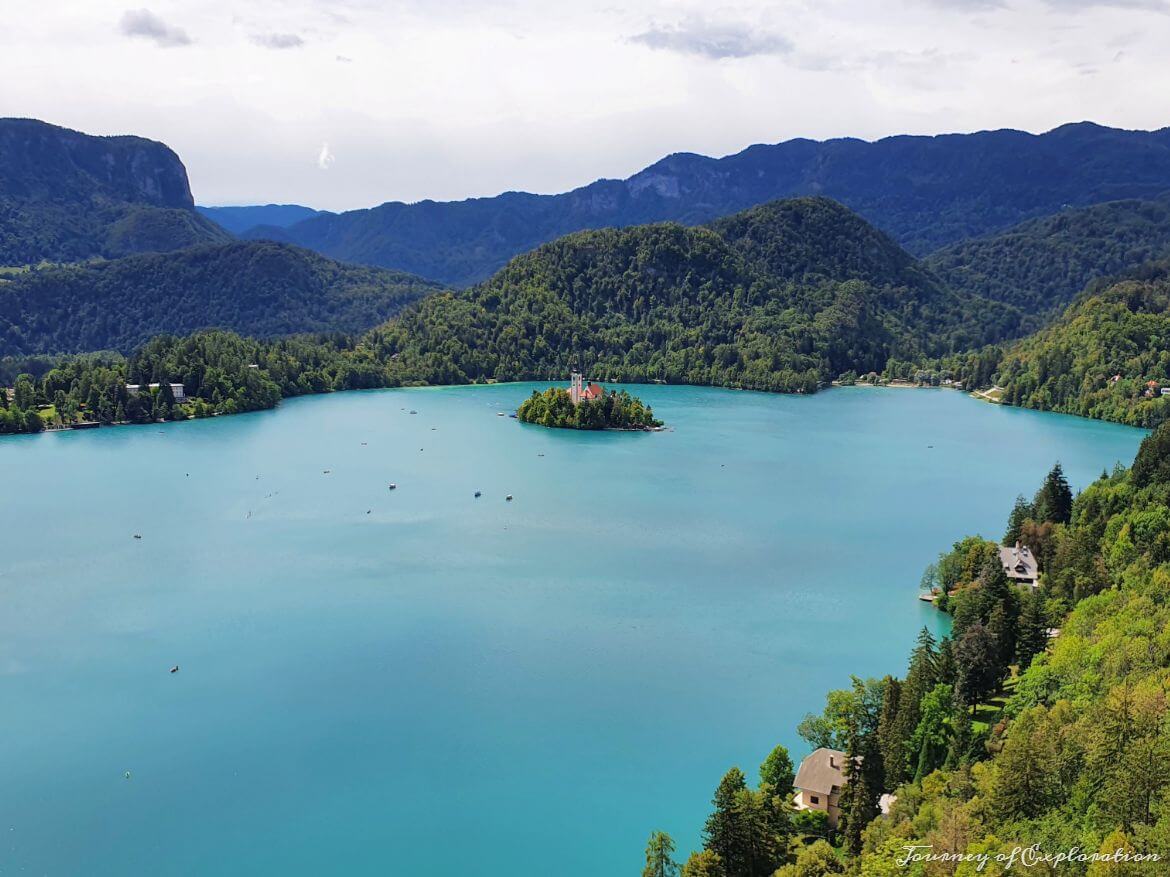
HOW TO GET AROUND SLOVENIA
By Car
I would recommend hiring a car if you would like to explore Slovenia at your own pace without having to rely on the public transport timetables. The best place to rent a car is the airport.
I always try and rent a car whenever I travel as it just gives you the freedom to plan your trip as you like it and stop wherever you like, as I usually do with too many photo stops along the way.
Car rental can be relatively cheap off-season, but it is usually €35 per day in high season. Better to book in advance before your travel for the best deals. Also in high season, there might be low availability and the prices can be much higher if you leave it until you arrive. Check the link below to book and compare car rental prices.
All rental cars should display the road toll sticker (usually included with your rental car).
Parking
Parking is restricted in most towns and you will have to leave your car in a car park slightly outside the town centre (e.g. Piran, Ptuj). In Ljubljana, you can park right in the city centre in underground car parks but prices can be quite expensive.
Generally, parking can be difficult to find in high season with most car parks full in destinations like Lake Bled.
In most places, there are parking ticket machines that you can pay with coins, a credit card or through an app.
By Taxi
There are taxi stands in most towns but taxis can be a bit expensive if you plan to go further distances.
By Train
Trains are run by Slovenian Railways and connect most towns and cities. You can buy tickets at train stations or through this website. Prices are relatively cheap.
By Bus
Travelling by bus can be a cheaper way of exploring the country. Coaches connect most of the tourist destinations in Slovenia. You can get your ticket at bus stations. There are different companies but prices are similar. Bus services can get very busy on Fridays and weekends if you are travelling to the mountains or the coast.
Rome2Rio is a good website for checking prices & times on train and bus travel.
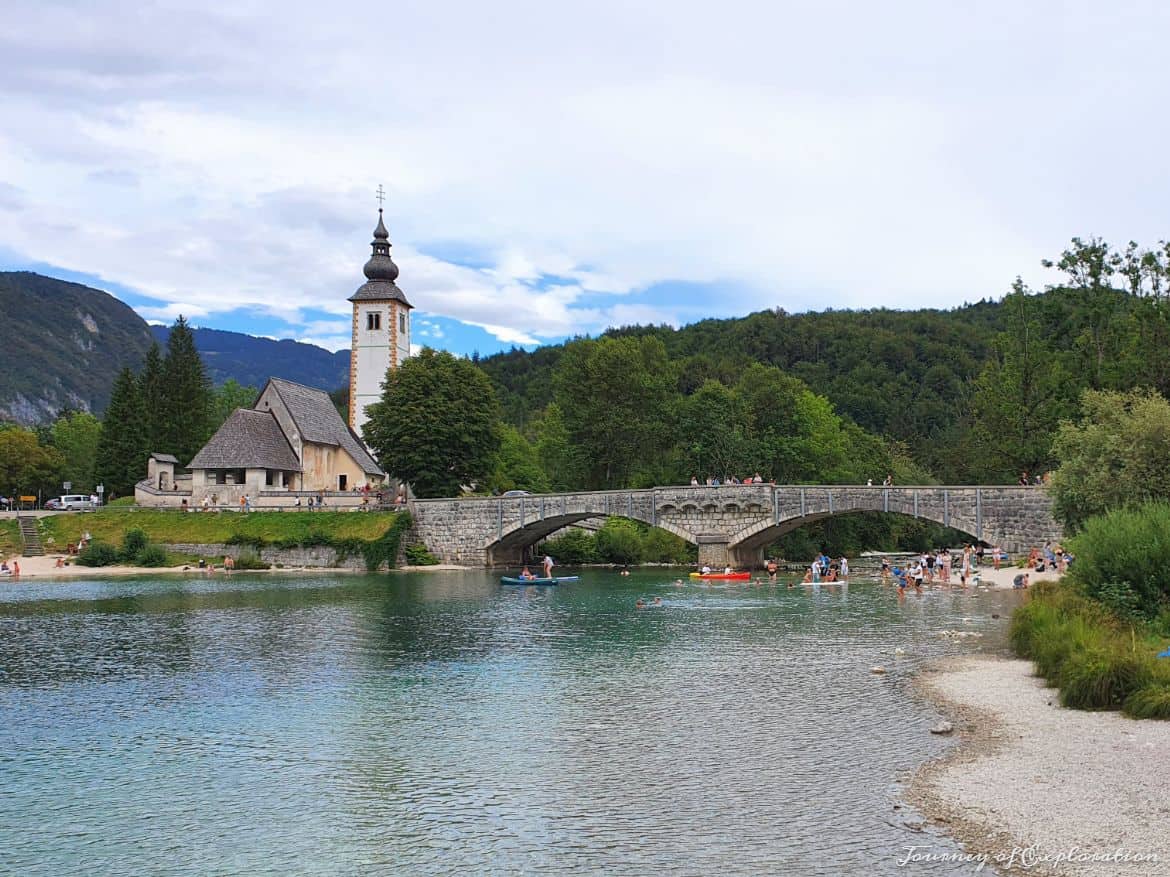
WHAT TO EAT & DRINK
The best place to eat is the capital Ljubljana with a variety of good restaurants for every taste. A nice area for a meal and a drink is the pedestrian area next to the river by the old town. Piran is a great place for seafood.
Best bars & restaurants in Slovenia
- Gostilna Sokol: Popular restaurant in the old town square of Ljubljana offering traditional dishes.
- Gujžina: Excellent traditional Slovenian vegetarian food on Mestni Trg (Ljubljana)
- Julija: Relaxed restaurant in the old town of Ljubljana offering Slovenian cuisine, pasta, grilled meats & seafood.
- Strelec Restaurant: Fine dining with a view at Ljubljana Castle
- Pirat Piran: One of the best seafood restaurants in Piran by the harbour
- Restaurant Pavel 2: Good seafood restaurant overlooking the sea in Piran
- Park Restaurant and Cafe: Best place by Lake Bled to try the famous Bled cake with a view
- Nebotičnik – Skyscraper: Rooftop bar and terrace with the best views of the Ljubljana skyline.
- Bar Maček: Nice bar with great cocktails and a riverside setting, located in the best area for a drink in Ljubljana
You can check the location of these restaurants on this map.
Slovenian Cuisine
- Prekmurska gibanica: Pastry with layers of cottage cheese, apples, nuts and pollyseeds.
- Kremsnita or Kremna Rezina (Bled cream cake): Speciality of Lake Bled. Pastry with layers of vanilla custard and whipped cream
- Kranjska Klobasa: Local sausage dish
- Potica: A cake roll filled with nuts or savoury filling
- Various soups: Jota (bean soup), barley soup or mushroom soup (Gobova juha)
- Burek: Pastry filled with meat or cheese
- Prsut: A dried sliced ham (similar to prosciutto)
- Struklji: Savoury or sweet cheese rolls
- Groats from buckwheat
- Local trout
- Slovenian wine
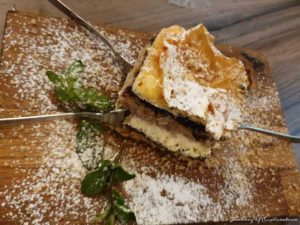
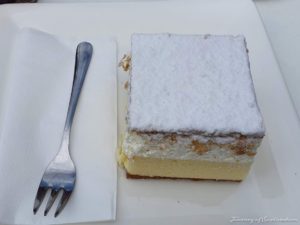
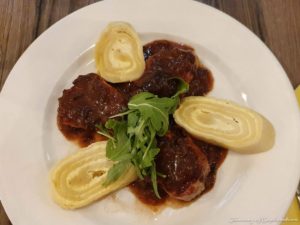
THINGS TO DO IN SLOVENIA
BEST attractions & PLACES TO VISIT
1. Ljubljana
Slovenia’s capital is a beautiful city with stunning architecture, a riverside setting and a hilltop castle offering great views. It’s a great place to explore on foot as most of the sights are within walking distance. The most attractive part of the city lies on both sides of the River with the Old Town on the east side below the castle. A riverside walk enjoying the views from the numerous bridges is a must. Ljubljana’s outdoor riverside cafes and restaurants are always full during the summer months.
Best attractions and things to do in Ljubljana:
- Ljubljana Castle
- Preseren Square
- Town Square
- Stari trg
- Ljubljana Cathedral
- Triple Bridge
- Central Market
- Cobblers bridge
- Dragon Bridge
- Cankarjevo nabrežje
- Butchers’ Bridge
- Congress Square
- Trg republike
- Fishmarket Footbridge
- National Gallery
2. Lake Bled
This is one of the most scenic and popular places in Slovenia. This picture-postcard lake in the Julian Alps attracts many tourists for its stunning setting, its clifftop castle and its tiny island with the beautiful church. It is also a good base to explore the mountains and surrounding countryside.
You can visit Bled Island and the small church and museum by hiring a boat or with an organised boat trip. You can also visit Bled Castle by a 15min uphill walk through the forest from the lake shore. It provides a terrace with great views of the lake and surrounding mountains. It also includes a museum that showcases the history of the lake, a chapel and a restaurant. You can walk along the whole length of the lake or even swim in the summer months. Apart from the castle, a good viewpoint is from the Bled Cafe.
No visit will be complete without trying the local speciality: the Bled Cake at one of the cafes by the lake.
3. Piran
Piran is the prettiest seaside town in Slovenia, full of Venetian architecture. It is located in the Istrian peninsula.
Best attractions and things to do in Piran:
- Cathedral of St George and the bell tower for stunning views of Piran
- Tartini Square: an oval-shaped marbled square at the heart of the town
- City Walls for panoramic views over the town
- Stroll along the promenade and the harbour
- Piran Aquarium: it showcases marine life from the Adriatic Sea
- Maritime Museum: It houses exhibits on shipbuilding, navigation, and the town’s maritime heritage.
- Piran Lighthouse: The iconic red-and-white striped lighthouse offers another vantage point for great views of the town
4. Lake Bohinj
This is the largest lake within the Triglav National Park surrounded by huge mountains. It is not as popular as Lake Bled, but equally stunning. During the summer months, there are lots of activities available, like sailing and kayaking. On the south side of the lake, there is a cable car to Vogel (winter ski resort) that provides great views over the lake. A good photo stop is by the Goldhorn statue and towards the stone bridge and the Church of St John the Baptist. You can also climb its tower for panoramic views of the whole area.
5. Triglav National Park
This national park, named after Slovenia’s highest peak, Mount Triglav, is a paradise for nature lovers. You can go hiking and explore the beautiful alpine scenery. The Vintgar Gorge and Lake Bohinj are popular attractions within the park.
6. Ptuj
Ptuj is one of the oldest towns in Slovenia and is situated in the northeastern part of the country. It is a beautiful town that attracts visitors with its historical charm, cultural heritage and riverside setting.
Best attractions and things to do in Ptuj:
- Ptuj Castle: Dominating the town’s skyline, Ptuj Castle is a medieval fortress that offers great views of the town and river. The castle houses the Ptuj Museum, where visitors can explore exhibitions on the town’s history, culture, and archaeology.
- Drava River: Walk along the Drava bridges to enjoy amazing views of the town.
- Old Town: Ptuj’s Old Town is characterized by well-preserved medieval architecture, cobblestone streets, and charming town squares.
- St. George’s Parish Church: This church is a beautiful example of Gothic architecture.
- Town Tower (Mestni stolp): The Town Tower is a medieval tower next to St. George’s church.
- Orpheus Monument: This Roman-era monument features a relief depicting the mythological story of Orpheus.
7. Soca Valley
The Soča Valley is a picturesque region in western Slovenia, popular for its beautiful alpine landscapes, and outdoor recreational opportunities. The valley stretches along the Soča River, which is renowned for its vibrant turquoise colour.
Best attractions and things to do in Soca Valley:
- Soca River: The beautiful Soca River is a popular destination for various water sports, including whitewater rafting, kayaking and canoeing. Rafting trips usually last for 1.5h with a boat shared between 8 people.
- Bovec: It is a charming town in the Soča Valley and serves as a hub for outdoor activities. It’s a popular base for exploring the surrounding mountains and enjoying adventure sports on the Soča River.
- Kobarid: It is a historic town in the Soča Valley, known for its World War I history. The Kobarid Museum provides insights into the battles that took place in the region.
- Kozjak Waterfall: This hidden gem is a beautiful waterfall located near Kobarid. The trail leading to Kozjak Waterfall takes visitors through a scenic gorge and lush forest. You need to pay a fee to access the waterfall.
- Boka Waterfall: Boka Waterfall is one of the most spectacular and highest waterfalls in Slovenia. A 15min walk from the parking area takes you to the viewpoint, where one has a nice view of the waterfall. There is a hiking path that takes you to the top of the waterfall (1h hike)
8. Lake Jasna
Lake Jasna is a picturesque alpine lake located near the town of Kranjska Gora in the Julian Alps of Slovenia.
The lake is actually comprised of two interconnected artificial lakes, the Upper Lake and the Lower Lake created in the 20th century. The lakes were formed as part of a hydroelectric power plant project.
Surrounded by the Julian Alps, Lake Jasna boasts a stunning natural setting. The clear waters of the lake, combined with the backdrop of mountain peaks, make it a popular destination for visitors seeking tranquillity and natural beauty.
9. Postojna Cave
Postojna Cave is one of the most famous and expansive karst cave systems in the world, located in southwestern Slovenia. It is a popular tourist attraction known for its breathtaking stalactite and stalagmite formations. Postojna Cave is a network of passages, chambers, and galleries formed by the Pivka River.
There are hourly tours (€28) that include an underground train ride and a 1.5km walk along an easy footpath, which takes an hour and a half. Each Postojna Cave tour is accompanied by tour guides, who provide visitors with tour commentary in Slovenian, Italian, English or German. Visitors can also use audio guides available in other languages. The temperature inside the cave is constant throughout the year (10 °C), so warm clothing and sports footwear are recommended. It is a bit pricey, but worth it and it can also be combined with a tour of the nearby Predjama Castle at a reduced price (€40).
One of the highlights of Postojna Cave is the presence of a rare aquatic salamander known as the olm or proteus (Proteus anguinus). These blind, cave-dwelling animals have adapted to their dark environment and are unique to karst caves in the region.
10. Predjama Castle
Predjama Castle is a picturesque medieval cave castle built inside a rock. The main draw is its beautiful setting that can be enjoyed for free. You can park at the village (€5) and walk up to the entrance while enjoying the views. You can also visit the castle inside (€17) which includes an audio tour of the various rooms and dungeon. A shuttle service from Postojna Cave to the castle is available in July and August – the ride takes up to 20 minutes.
11. Skocjan Caves
A UNESCO World Heritage site Skocjan Caves is one of the most impressive natural wonders of Slovenia. It is not as popular as Postojna but equally stunning. The Škocjan Caves are among the largest underground canyon systems in the world. The caves consist of several chambers, the largest of which is the Martel Chamber, reaching heights of up to 146 meters.
The cave tour (€18) lasts for about 1h and is done in groups with a guide. Inside the cave, it is not allowed to take any pictures. A light jacket is recommended for the caves as the temperature remains low even in the summer months (10 °C).
12. Skofja Loka
Škofja Loka is one of the most picturesque medieval towns in Slovenia. Visitors can enjoy strolling through the Old Town, which is characterized by narrow cobblestone streets, colourful facades, and charming squares.
Best attractions and things to do in Skofja Loka:
- Škofja Loka Castle: The Škofja Loka Castle is a prominent landmark, perched on a hill overlooking the town. The castle dates back to the 12th century, and today, it houses the Škofja Loka Museum, showcasing the town’s history and cultural heritage.
- Capuchin Bridge (Kapucinski most): This picturesque stone bridge spans the Poljanska Sora River and is a popular spot for photos. It provides lovely views of the castle.
- Mestni Trg (Town Square): The main town square is a vibrant hub with cafes, restaurants, and shops. The Plague Column, a monument dedicated to the victims of the plague, stands in the square.
- Cerkev Sv. Jakoba (Church of St. Jacob): This church, located in the Old Town, is known for its Baroque architecture and ornate interior.
13. Vršič Pass
Vršič Pass is a high mountain pass in the Julian Alps, situated in the northwestern part of Slovenia. It is the highest mountain pass in Slovenia and one of the most picturesque and iconic mountain passes in the country.
The road that traverses Vršič Pass is known for its stunning and dramatic scenery. The drive offers panoramic views of the surrounding mountains, valleys, and alpine landscapes.
The road is open during the warmer months but can be closed during winter due to heavy snowfall.
Vršič Pass is also a famous route for cyclists, both road cyclists and mountain bikers. The winding road and challenging ascent attract cycling enthusiasts from various parts of Europe.
There are some nice viewpoints along the pass. Along the way you’ll find the Russian Chapel (Ruska kapelica), a nice spot for a quick break.
14. Maribor
Maribor is the second largest city in Slovenia, located in the northeastern part of the country. Maribor has a beautiful riverside setting and a lovely main square.
Best attractions and things to do in Maribor:
- Old Vine (Stara Trta): Maribor is home to the Old Vine, one of the oldest grapevines in the world. The vine is over 400 years old and still produces grapes. The Old Vine House, located on Lent, the oldest part of the city, is a museum dedicated to the vine and the city’s winemaking traditions.
- Maribor Castle: The city features Maribor Castle, which dates back to the 15th century. The castle has undergone various renovations and today houses the Regional Museum Maribor.
- Main Square (Glavni Trg): The Main Square is the central square of Maribor and a hub of activity. It is surrounded by colourful buildings, cafes, and shops.
- Drava River: The Drava River, flowing through the city, offers a picturesque setting. The Lent district along the river is known for its historic architecture, charming streets, and riverside cafes.
- Maribor Cathedral (Cathedral of St. John the Baptist): This cathedral, with its impressive Gothic architecture, is one of the prominent landmarks in the city.
- Pohorje: The nearby Pohorje mountain range provides opportunities for outdoor activities. In winter, Pohorje is a popular destination for skiing, while in the warmer months, it offers hiking and biking trails.
15. Celje Castle
Celje Castle is situated on a prominent hill overlooking the town of Celje. It is an impressive medieval castle offering amazing views.
The castle has a rich history dating back to the 12th century. It was originally built by the Counts of Celje, a powerful Slovenian noble family. Over the centuries, the castle underwent several modifications and expansions.
The castle features a mix of architectural styles, including Romanesque and Gothic elements. It consists of several buildings, towers, and walls. The complex is surrounded by a defensive wall.
Celje Castle is a popular tourist attraction and a cultural heritage site. Visitors can explore the castle grounds, towers, and various exhibitions. The castle provides panoramic views of the surrounding area.
16. Portoroz
Portorož is a coastal resort town in Slovenia, located on the Adriatic Sea. Known for its spa facilities, beaches, and vibrant atmosphere, Portorož is a popular destination for relaxation and seaside activities, especially in the summertime. There is a great choice of hotels and restaurants.
Best attractions and things to do in Portoroz:
- Seaside Promenade: The town boasts a scenic seaside promenade where visitors can take leisurely walks, enjoy views of the Adriatic Sea, and explore various cafes and shops.
- Beaches: Portorož has several beaches where visitors can relax and sunbathe. The Adriatic Sea in this area is known for its clean and clear waters.
- Spa and Wellness: Portorož is renowned for its spa and wellness facilities. Visitors can indulge in various wellness treatments, including massages, thermal baths, and beauty therapies.
- Casino Portorož: The town features a casino for those interested in gaming and nightlife.
- Portorož Marina: The marina is a hub for sailing and yachting activities. It provides a picturesque backdrop with boats and yachts anchored along the waterfront.
- Salt Pans: Nearby, the Sečovlje Salt Pans are an interesting attraction. Visitors can learn about traditional salt production and explore the unique natural environment.
17. Vintgar Gorge
Located to the north of Lake Bled, Vintgar Gorge is another of Slovenia’s beauty spots. You can take the trail along a wooden walkway by the side of the river for 1.6km one way and for return, there are two arranged longer return paths through the countryside or you can take a taxi for an additional fee. It can take up to 2h, but the total duration of the walk depends on where you park. There is an entrance fee of €10. The gorge is closed during the winter months.
18. Velika Planina
Velika Planina is a scenic mountain plateau in the Kamnik Alps of Slovenia, known for its alpine landscapes and traditional shepherds’ huts.
These wooden huts, with their unique architecture and shingle-covered roofs, are used by shepherds during the summer months, who bring their cows to graze on the lush alpine meadows. Visitors can witness this pastoral way of life and learn about the local customs.
The plateau is accessible by a cable car, which takes visitors from the valley to the mountain. Velika Planina offers numerous hiking and nature trails, allowing visitors to explore the plateau and its surroundings.
19. Logar Valley (Logarska Dolina)
Logar Valley, also known as Logarska Dolina, is a glacial valley in the Kamnik Alps in northern Slovenia.
The valley is characterized by picturesque alpine landscapes, including lush meadows, dense forests, and towering peaks. The Savinja River flows through the valley, adding to its natural charm.
One of the notable attractions in Logar Valley is the Rinka Waterfall (Slap Rinka), which cascades from a height of 105 meters (344 feet). The waterfall is easily accessible by a marked trail.
The valley offers a network of hiking trails that cater to various fitness levels.
The Solčava Panoramic Road is a scenic route that takes visitors through the Logar Valley, offering breathtaking views of the surrounding mountains and valleys.
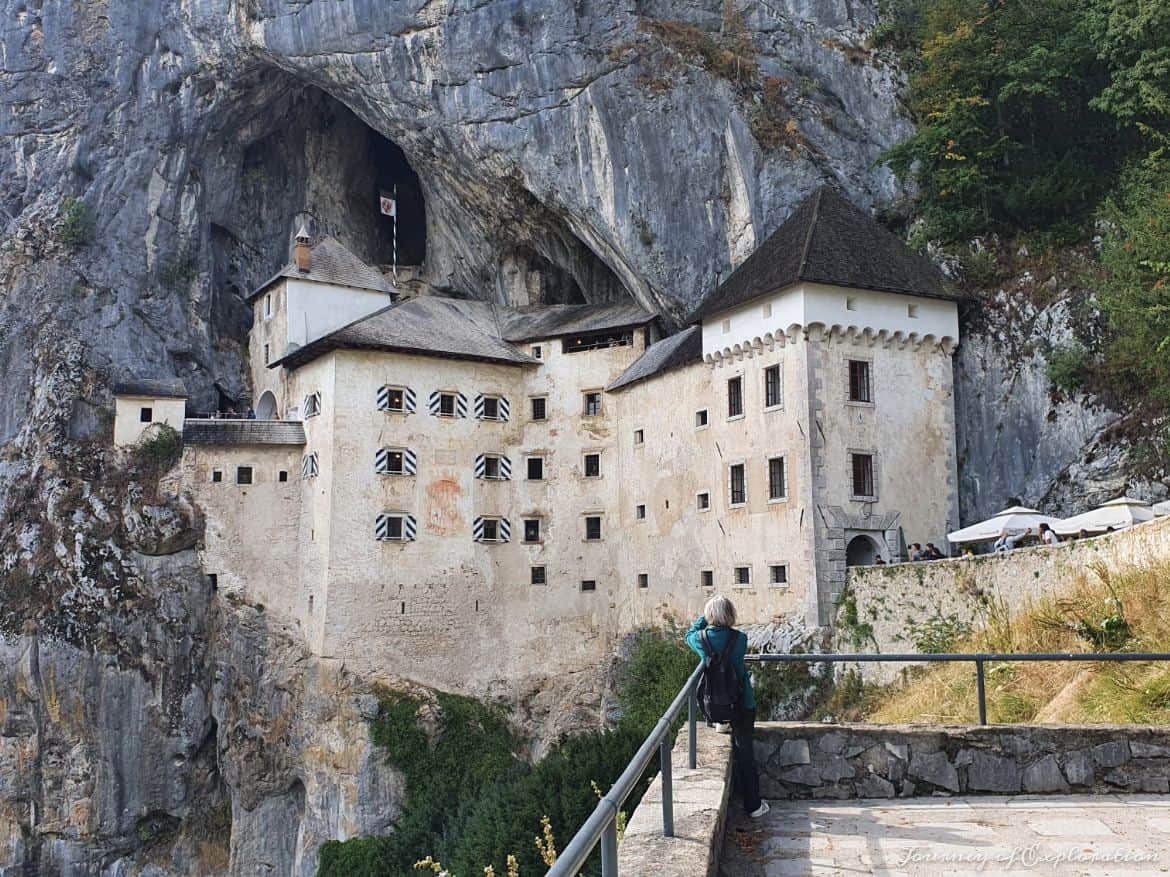
BEST TOWNS & VILLAGES IN SLOVENIA
- Ljubljana
- Piran
- Ptuj
- Skofja Loka
- Maribor
- Koper
- Portoroz
- Izola
- Celje
- Idrija
- Bovec
- Kranj
- Radovljica
- Kamnik
- Novo mesto
- Kranjska Gora
- Trenta
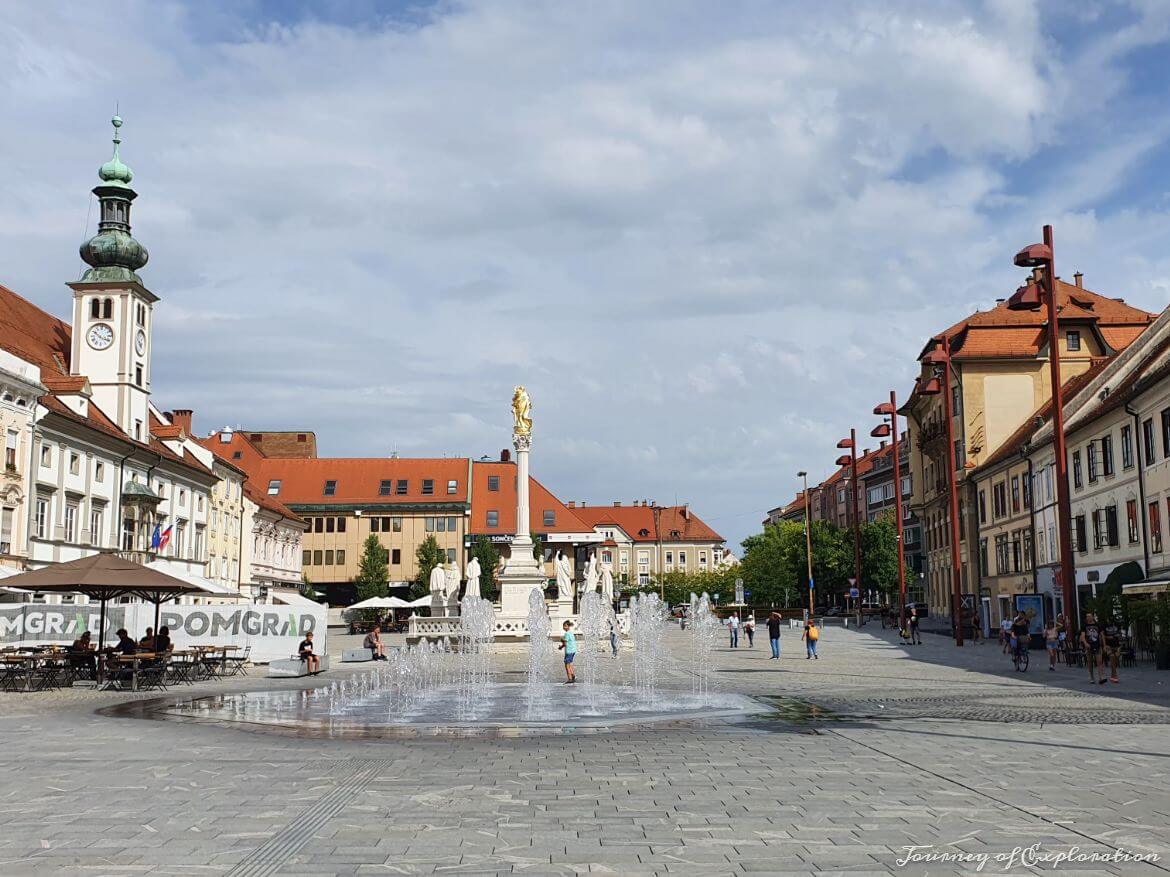
BEST BEACHES IN SLOVENIA
Slovenia is not famous for its beaches. Most of the tiny coastline is mainly rocky without any decent beaches, although locals still swim in a few pebbly spots around Piran, Koper and Izola. One decent sandy beach is Portoroz which tends to get overcrowded during the summer months. You can also swim in Lake Bled or Bohinj, but the water can be quite cold.
Below is a list of the best swim spots in Slovenia.
- Portoroz beach: The only sandy beach in Slovenia, although even Portoroz beach is partly paved. It is the most popular beach destination and it is usually packed during the summer months. It is surrounded by big hotels, restaurants and all tourist amenities.
- Mesecev Zaliv Beach (Moon Bay) & Bele Skale Beach: Both are pebbly beaches surrounded by cliffs, part of Strunjan Nature Reserve, and only accessible on foot.
- Simonov Zaliv Beach: This is a small pebbly beach to the west of Izola town.
- Mestna Beach Koper: This is a small pebble beach to the north side of the town
- Svetilnik Beach Izola: This is a partly pebble and partly paved beach in Izola.
- Piran Beach: There are two swimming spots in Piran. Both are paved spots with stairs into the sea.
- Lake Bled & Bohinj: There are some pebbly spots along the shore of both lakes for a dip into the water. It can be quite cold though even during the summer months.
You can check the location of these beaches on this map.
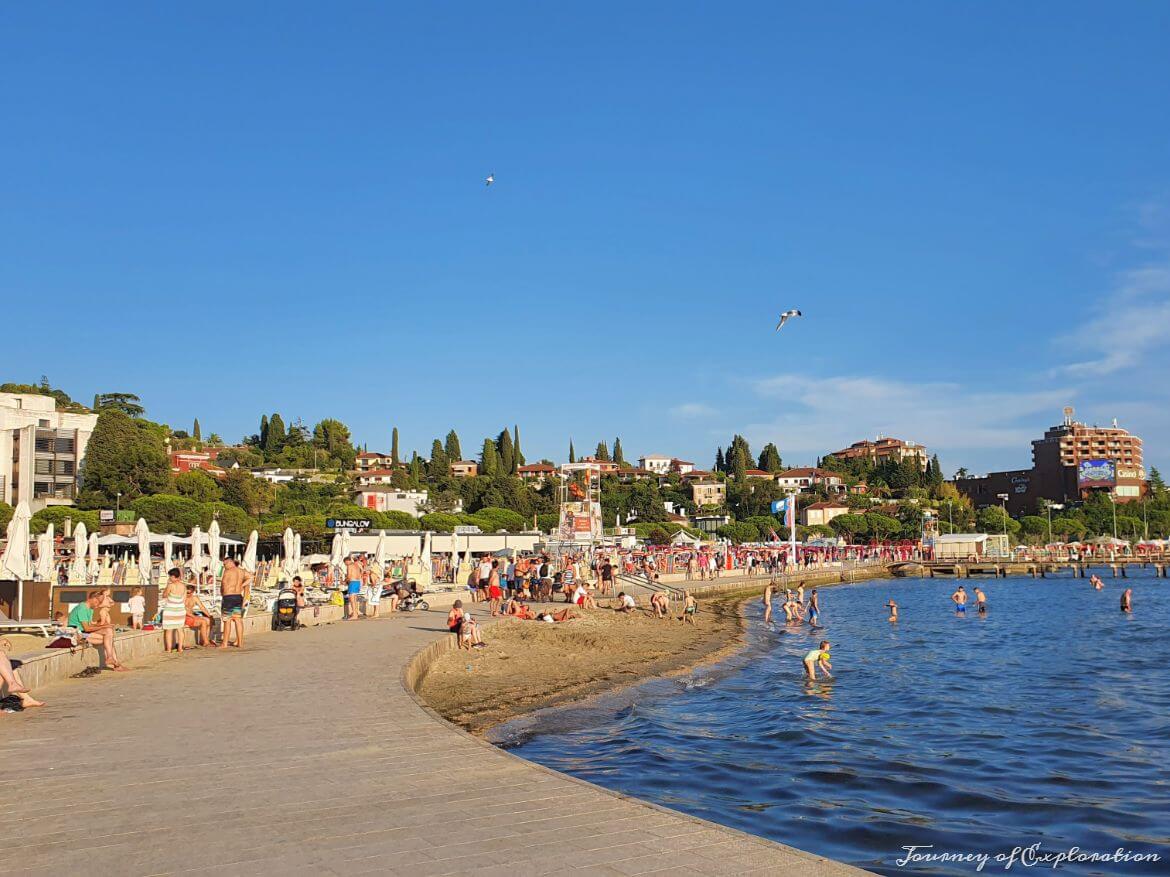
SLOVENIA TOURIST MAP
You can click on the map below for the location of the best attractions, restaurants & hotels, as well as the best places and beaches to visit in Slovenia.
To save the map, make sure you are logged in to your Google account, then click on the star to the right of the title. To locate the map go to your Google Maps app (or Account), click on ‘Saved’ (or ‘Your Places’), and select ‘Maps’.
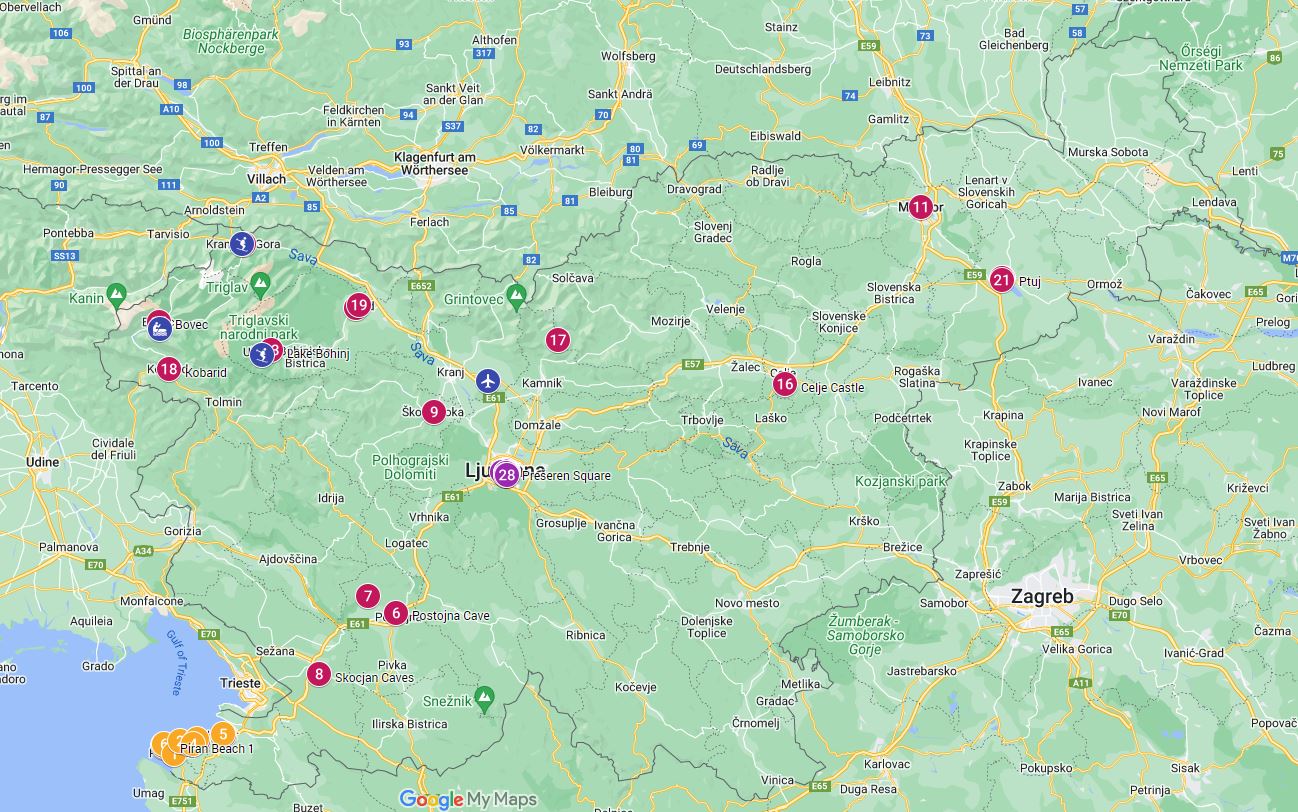
SLOVENIA ITINERARY
It is worth staying in Slovenia for a week to 10 days if you want to explore it. The following itinerary includes things to do for 7 days. I have taken Ljubjjana as the main base for 4 nights; 1 night on the coast and 2 nights in the mountains.
Day 1: Ljubljana
- Explore Ljubljana Castle for panoramic views of the city.
- Stroll along the Ljubljanica River enjoying the views from the various bridges.
- Wander around Ljubljana’s Old Town, enjoying dinner at one of the local restaurants
- Overnight: Ljubljana
Day 2: Celje, Ptuj & Maribor
- Visit the impressive Celje Castle enjoying panoramic views of the surrounding countryside.
- Continue to Maribor, visit the city square and stroll along the Drava River.
- Travel to Ptuj, and explore the medieval castle and Old Town.
- Overnight: Ljubljana (or Ptuj)
Day 3: Velika Planina
- Visit the charming town of Kamnik
- Take the cable car to Velika Planina Alpine Plateau
- Optional drive to Logarska Dolina to explore this amazing alpine valley
- Overnight: Ljubljana
Day 4: Lakes Bled and Bohinj
- Visit the lovely town of Skofja Loka
- Optional visit to the small town of Radovljica
- Drive to the picturesque Lake Bled
- Visit Bled Castle and take a Pletna boat to Bled Island
- Hike in the Vintgar Gorge
- Visit the amazing Lake Bohinj
- Overnight: Lake Bled
Day 5: Triglav National Park & Soča Valley
- Quick stop at Kranjska Gora
- Wander around the amazing Lake Jasna
- Take a scenic drive through Vršič Pass admiring the Julian Alps
- Whitewater rafting on the Soča River
- Visit the small town of Bovec
- Overnight: Bovec or Kobarid
Day 6: Coastal Slovenia
- Visit the Škocjan Caves, a UNESCO World Heritage site
- Drive to the coastal town of Koper and climb the bell tower
- Optional visit to the coastal town of Izola
- Head to Portorož for a relaxing afternoon by the beach.
- Sunset at Piran city walls followed by dinner in the Old Town.
- Overnight: Piran
Day 7: Postojna Cave and Predjama Castle
- Explore the beautiful town of Piran and admire the views from the bell tower
- Visit the famous Postojna Cave and its underground formations
- Have a look at Predjama Castle, located in the nearby cave mouth
- Optional visit to the Cerkev Svetega Antona church in the town of Idrija for lovely views
- Overnight: Ljubljana
You can find the routes for the above itinerary on the flowing clickable map.
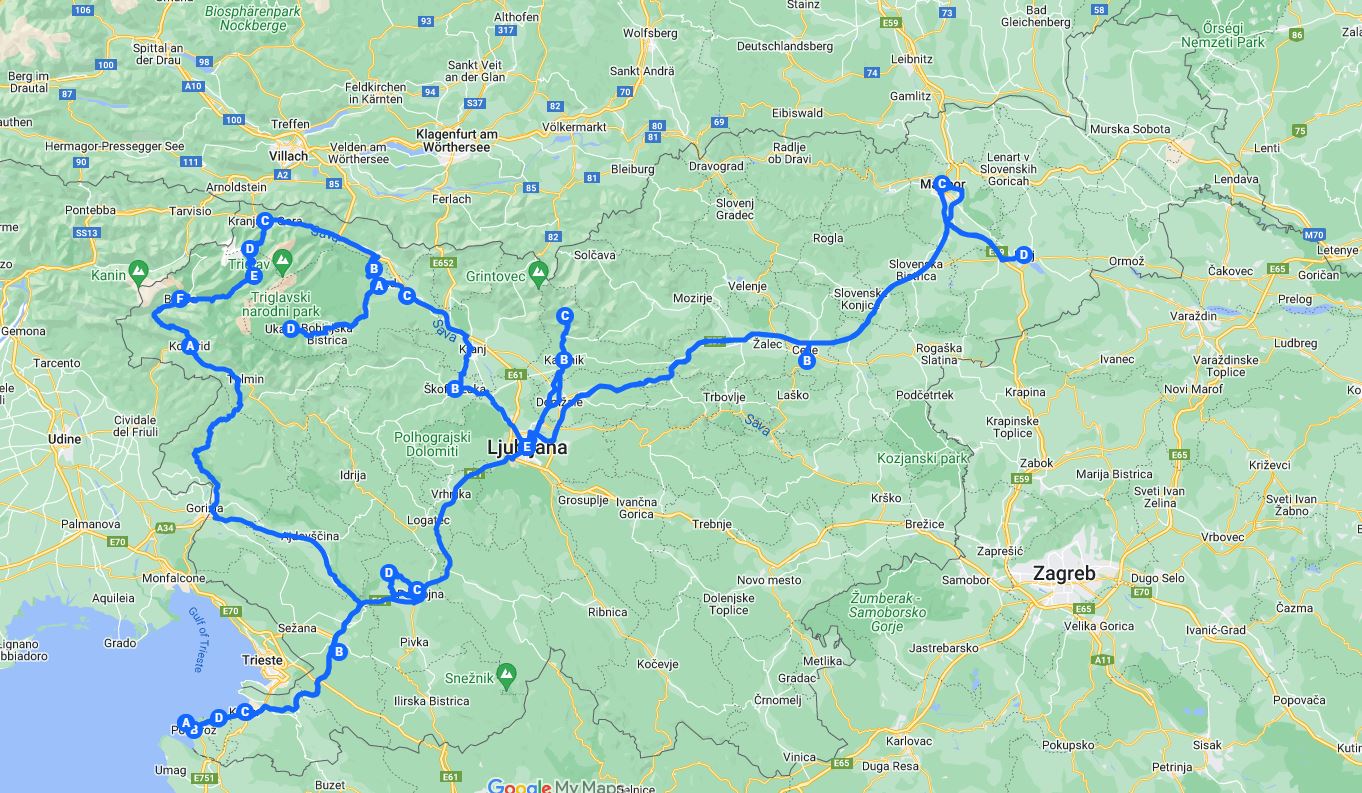
SLOVENIA PHOTOGRAPHY
You can check the best photographs from Slovenia here.
Here is a list of the best viewpoint locations in Slovenia where you enjoy great views.
- Nebotičnik – Skyscraper
- Ljubljana Castle
- Bled Castle
- Celje Castle
- Zvonik Piran
- Dravski most Ptuj
- Maribor Viewpoint
- Viewpoint Supca
- Ptuj Castle
- Dravska brv Ptuj
- Cafe Belvedere Lake Bled
- Stari Most Maribor
- Bell Tower Koper
- Piran Viewpoint
- Piran Viewpoint 2
- Pastirkovo Lookout Point
- Viewpoint over Logar Valley
You can check these viewpoints’ locations and the best photo spots in Slovenia on the following map.
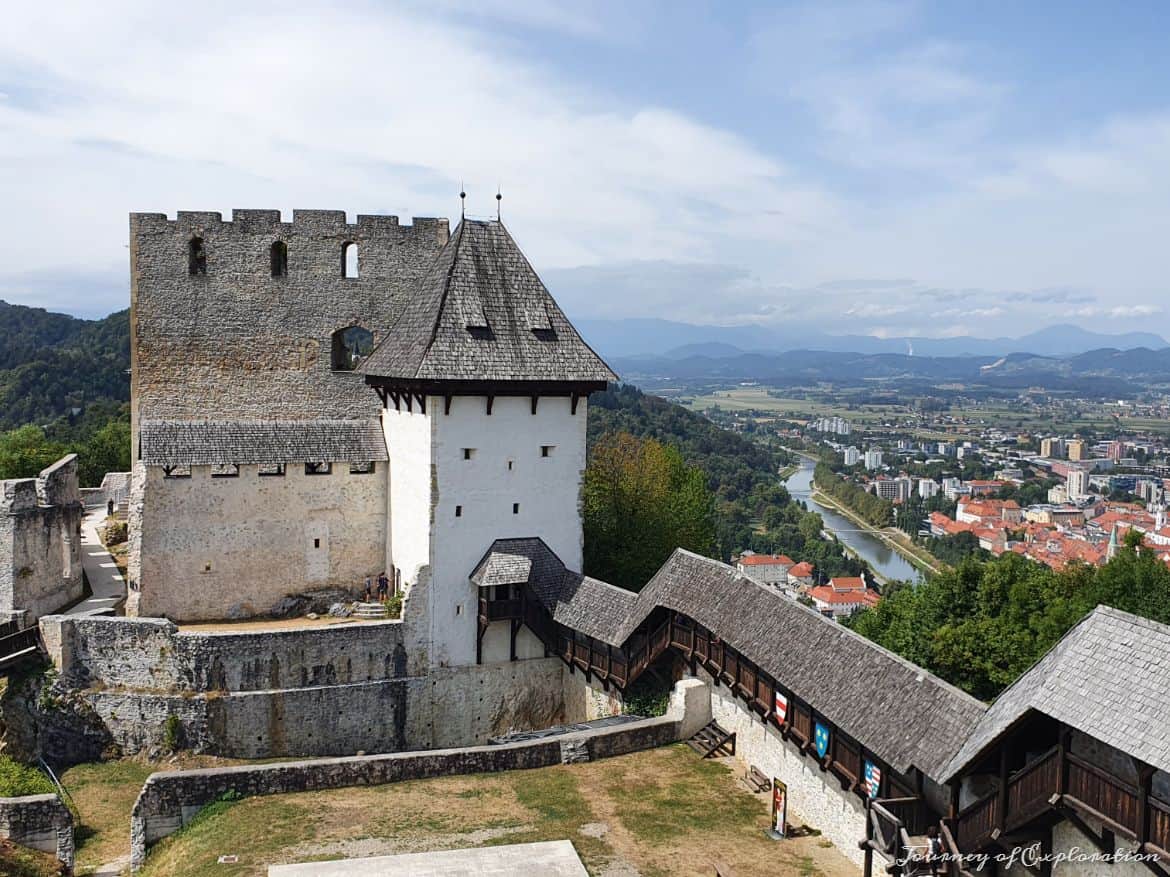
ACTIVITIES IN SLOVENIA
Slovenia is a great place for outdoor activities in summer and winter
Hiking
- Climbing Mt Triglav: This hike up to the 2864m summit is one of the most popular hikes among Slovenians and can get very busy during the summer months. You will need two days to do this hike and overnight in a hut. There are various routes to the summit, with the most popular routes from Lake Bled or Lake Bohinj.
- Triglav National Park: There are various trails for hiking. You can get information and maps at the TNP information centres in Lake Bled, Bohinj and Kranjska Gora. You can check the TNP website for further information about trails.
- Lake Bled: An easy hike around the Lake offering great views of the island and surrounding area.
Rafting
This is a very popular activity in the Soca River. Near the town of Bovec is the main rafting centre.
Skiing
That’s the most popular activity among Slovenians during the winter months.
A popular ski resort is the Kranjska Gora ski resort, but there is also the Vogel Ski Resort in Lake Bohinj.
There are two other popular ski resorts: the Mariborsko Pohorje near Maribor and Krvavec Ski Resort, north of Ljubljana.
You can find more information about ski resorts in Slovenia here.
Brown Bear Watching
There are guided tours in the forest of Loz Valley, east of Postojna, to observe brown bears between May to September. The tour involves a walk in the forest and up to an observation point waiting for bears to appear.
Top Events
Kurentovanje is Slovenia’s most popular carnival event that takes place in February in the town of Ptuj with lots of festivities and a parade.
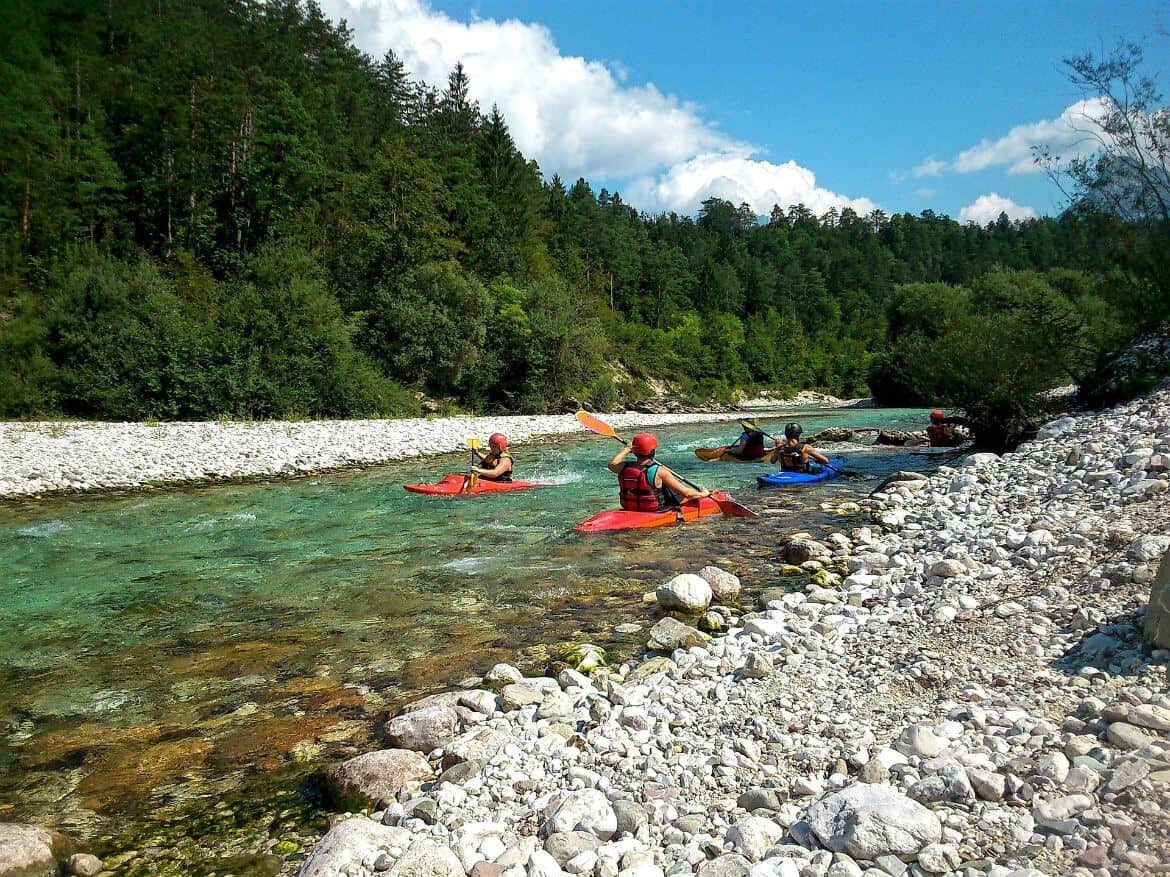
SLOVENIA EXCURSIONS & TOURS
Predjama Castle and Postojna Cave
Predjama Castle and Postojna Cave Tour is a half-day trip from Ljubljana (6h duration) and includes the entrance fees for both Postojna Cave and Predjama Castle (with audio guide). This is a good option to explore two of the most popular sights in Slovenia for someone without a car, as it includes pick-up and drop-off at your hotel.
Lakes Bled & Bohinj and Vintgar Gorge
Lakes Bled & Bohinj and Vintgar Gorge Tour is a small group day trip from Ljubljana (10.5h duration) and includes a visit to Lake Bled, Bled Castle (entrance fee excluded), Lake Bohinj, the Vintgar Gorge and also Skofja Loka This is a good option to visit the Julian Alps in Slovenia for someone without a car, as it includes pick-up and drop-off at your hotel.
Skocjan Caves, Lipica & Piran
Skocjan Caves, Lipica & Piran Tour is a small group day trip from Ljubljana (10.5h duration) and includes a visit to Skocjan Caves, (entrance fee excluded), photoshop in Lipica, visit of Piran and photostop in Predjama Castle.
More information about excursions & tours in Slovenia can be found here.
VIRTUAL TOUR OF SLOVENIA
Check the following video slideshow to get further inspiration to visit Slovenia 🙂
THINGS TO BUY IN SLOVENIA
The best place for shopping for local products is the central market in Ljubljana. There are also various souvenir shops in the capital and Lake Bled. Some local products you can buy as souvenirs include Idrija lace, Slovenian wine and cheese, Piran salt & Slovenian honey,
FURTHER READING
Some websites for more information about Slovenia:
- I Feel Slovenia: The official tourist website of Slovenia
Some good travel guides to buy before your visit Slovenia:
- Lonely Planet Slovenia (Travel Guide): This is the most up-to-date comprehensive guide to Slovenia and is perfect for both exploring top sights and taking roads less travelled.
- DK Eyewitness Slovenia (Travel Guide): Another good guide with beautiful photos (also in Kindle).
TRAVEL RESOURCES
- Flights: I always use Skyscanner as my first choice as it’s so easy to use and you can search best deals by month. Google Flights is another very good search engine.
- Accommodation: I always use Booking.com as my first choice, as it offers a great choice of accommodation at affordable prices and it’s so easy to use. Airbnb is a great alternative for homes and apartments to rent by real homeowners. HotelsCombined is one of the best search engines to check deals from different websites.
- Ferries: Ferryhopper is one of the best websites to check ferry schedules and buy the cheapest ferry tickets.
- Car Rental: I always check Skyscanner for the cheapest car rental options. Discover Cars is also a good and easy-to-use website with great prices.
- Public Transport: Rome2Rio is a good website for checking prices & times on train and bus travel.
- Day Trips & Tours: Viator provides the most comprehensive list of day trips and you can book directly with them. GetYourGuide is also a great place to search for tours & activities to do.
- Travel Insurance: SafetyWing is a great choice for long-term travellers and digital nomads. Alternatively, you can use one of the price comparison websites for cheaper quotes.
- Disclosure: This post may contain affiliate links, and at no extra cost to you, I may receive a small commission if you make a purchase. I recommend only products and companies I use and the income goes to keeping this site running and ad-free.

